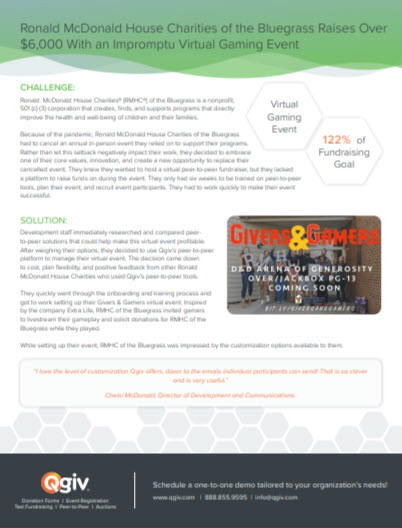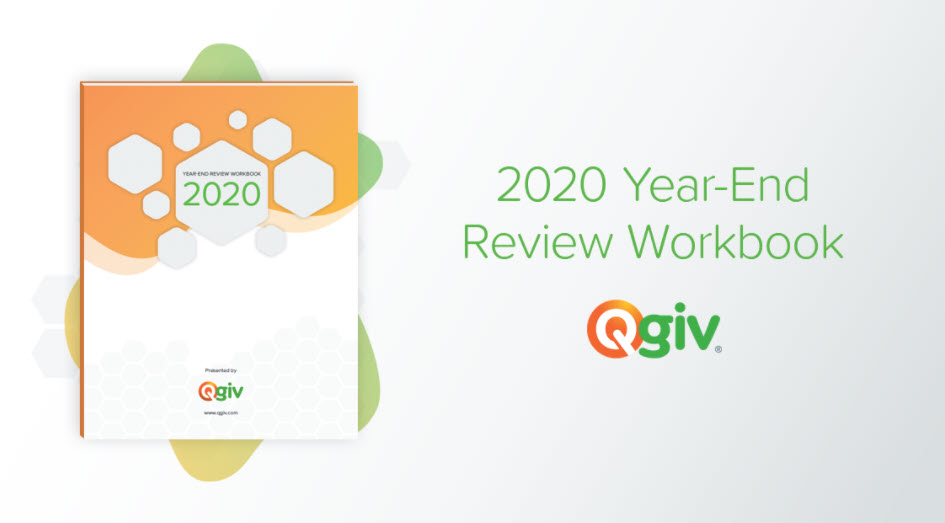With the new year comes new goals for fundraisers like completing more grant applications, growing your pool of donors, or increasing attendance at your fundraising events. For a successful fundraising year, it’s important to have a plan for how you’ll reach your department’s goals (and to ensure you don’t become part of the 80% of people who abandon their New Year’s resolutions!). Here are five helpful New Year’s resolutions for nonprofits to help you succeed in the upcoming year.
1. Make Data-Backed Decisions for 2021
Because of the COVID-19 pandemic, 2020 wasn’t the best year for most nonprofits. But on a positive note, donors kept giving, which led to the most successful Giving Tuesday to date. According to Giving Tuesday, donors gave $2.47 billion this year, which was 25% more than in 2019! In fact, their data estimated 29% growth in the number of people participating in this global day of giving. Despite many families dealing with financial uncertainty because of the coronavirus, donors continued to give. With all that giving comes a lot of donor data!
Start 2021 off right by making one of your nonprofit’s New Year’s resolutions to analyze all of that glorious new data. It’s important to get to know which fundraising campaigns succeeded and which fell short. Adjust your strategy based on the numbers. Learn what motivates your donors to give, and more importantly, what makes them stick around after that first gift.
How do you compile all that data and make sure you’re getting the most valuable information from it? We’ve got you covered. Download the 2020 Year-End Review Workbook. It’ll walk you through the process of analyzing your data so you can make data-backed decisions about your 2021 fundraising strategy.
2. Make websites and donation forms mobile responsive
If one of your fundraising goals is to earn more donations on your company website, this is the most critical of our five New Year’s resolutions for nonprofits. As web traffic from mobile devices grows, websites that aren’t mobile responsive get visited less. According to Statista, mobile devices account for approximately half of web traffic worldwide. If you’re not mobile-optimized, you’ll attract fewer visitors to your site. Less web traffic will result in fewer online donations on your form. Even with a mobile-responsive donation form, a website that’s hard to navigate on a smartphone may still cause a decrease in donations. Why? Your visitors want to conduct research on your nonprofit before they give. If that’s difficult to do on your nonprofits’ website, they’ll be frustrated before they even reach your donation form, if they reach it at all.
Not only are non-mobile-responsive pages difficult to use on a smartphone, search engines like Google rank sites that aren’t mobile-responsive lower in search results. A lower search engine ranking means fewer people will discover your page and fewer will visit it to donate. Making your website mobile responsive helps you grow your audience online. If you’ve got an outdated website, prioritize getting it up to Google’s standards. Need more convincing? Mobile-friendly donation forms and webpages yield 34% more donations!
3. Implement donor retention strategies
Despite the success of Giving Tuesday 2020, many nonprofits have experienced an overall decline in giving because of cancelled fundraising events or donors’ reluctance to overextend themselves during a crisis. How did your nonprofit try to retain your donors in 2020? Did you have a donor retention strategy? If you didn’t have a retention strategy in place, this is one of the New Year’s resolutions for nonprofits to adopt for 2021.
Even with the COVID-19 vaccines deployed, it will still take time before the pandemic is under control. That means it’s important for your nonprofit to retain as many donors as possible to help weather the storm. Make a New Year’s resolution to develop a donor retention strategy if you don’t have one, or revisit and refine your strategy if you do. Retaining donors is crucial for a nonprofit’s long-term sustainability. A steady stream of donations from the same donors can help keep your programs funded even when facing challenging situations. How do you keep donors giving to your nonprofit year after year? Watch this webinar presented by Bloomerang’s Steven Shattuck for great info on how to build a winning donor retention strategy.
4. Incorporate virtual and hybrid events into your fundraising strategy
In-person fundraising events are still off the table in many parts of the world because of the pandemic. That doesn’t mean you have to give up on fundraising events entirely! Instead, transition your fundraising strategy to incorporate virtual and hybrid event formats. Whether 100% online or virtual with some in-person elements, these events are designed to raise crucial funds while keeping your supporters safe.
Many nonprofits, such as Ronald McDonald House Charities of the Bluegrass, have found great success with virtual events during the pandemic.

Your nonprofit can benefit from virtual and hybrid events too. Set a New Year’s resolution to get events back on the table by coming up with a virtual fundraising event idea or transitioning an existing in-person event to a more virtual format.
A hybrid event incorporates elements that create an in-person feel. Check out our hybrid event guide for ways to safely implement in-person elements to your virtual event. New to virtual events? We’ve got you covered. Here are our tips to hosting successful virtual fundraising events. We’ve also put together a list of fifteen virtual fundraising event ideas if you need help brainstorming your virtual event concept. Download the list here.
5. Take care of yourself
The other New Year’s resolutions on this list are about how you and your fundraising department can succeed in 2021. This last resolution is to slow down and take time out for self-care. Fundraising keeps you busy and it can be hard to find a few moments for yourself. While the work you do is incredibly rewarding, it can also be stressful… and too much stress is unhealthy. Avoid burnout in 2021 by taking time out to enjoy yourself.
After work, focus on spending time with your family, engaging in a favorite hobby, telling yourself positive affirmations, or just taking a nice power nap on the couch to recharge. Do what helps you feel a sense of calm after a busy day of making good things happen. You deserve it!
Need a guide to getting your relaxation on? Bloomerang wrote a great list of seven self-care tips for nonprofit professionals.
Conclusion
The new year means new goals for your nonprofit and your fundraising department. Succeed in your 2021 fundraising by implementing a fundraising strategy based on your donor data. That strategy should cover making your entire website mobile responsive if it isn’t already, implementing a donor retention strategy or improving on your existing donor retention efforts, and incorporating virtual and hybrid events to raise funds even if you can’t host a large, in-person fundraiser.
But don’t forget to stop and smell the roses! Make time for relaxation to avoid feeling burned out. A burned-out fundraiser is an ineffective fundraiser. We hope these New Year’s resolutions for nonprofits bring you prosperity in 2021.
Ready to reflect on 2020 and formulate a winning fundraising strategy for 2021? Download your copy of the 2020 Year-End Review Workbook to get started.



